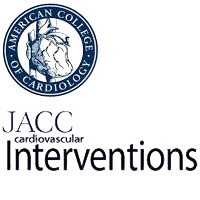Publié dans Journal of the American College of Cardiology : Cardiovascular Interventions 2016 Aug 22;9(16):1703-5
Auteurs : Collet JP, Guedeney P, Montalescot G.
Article disponible en consultant le site

je fais un don

Publié dans Journal of the American College of Cardiology : Cardiovascular Interventions 2016 Aug 22;9(16):1703-5
Auteurs : Collet JP, Guedeney P, Montalescot G.
Article disponible en consultant le site
Editorial comment

The first challenge was the safety of stenting and of the type of stent, drug-eluting stent (DES) versus bare-metal stent (BMS). Two randomized trials have demonstrated the superiority of newer-generation DES over BMS in high bleeding risk patients who cannot tolerate long-term exposure to DAPT. Major adverse cardiovascular events were reduced by 40%. In the LEADERS FREE (Prospective Randomized Comparison of the BioFreedom Biolimus A9 Drug-Coated Stent versus the Gazelle Bare-Metal Stent in Patients at High Bleeding Risk) trial, 65% of patients were over 75 years of age and 35% were on oral anticoagulant therapy (OAT). The mandated duration of DAPT was 1 month and the benefit of DES over BMS was larger in the pre-specified subgroup of ACS patients. Major bleeding events at 2 years of follow-up were twice as frequent as spontaneous myocardial infarction. The merit of these trials was also to demonstrate that trials dedicated to frail patients can be conducted.
In this issue of JACC: Cardiovascular Interventions, Sherwood et al. describe the management of patients randomized in the ROCKET AF (Rivaroxaban Once Daily Oral Direct Factor Xa Inhibition Compared with Vitamin K Antagonism for Prevention of Stroke and Embolism Trial in Atrial Fibrillation) trial and who underwent percutaneous coronary intervention (PCI) during the course of the trial between 2006 and 2009. Unplanned PCI was rare in this atrial fibrillation (AF) population but associated with a worse prognosis as compared to those without PCI. As expected, PCI patients were more severely ill, one-third having a prior myocardial infarction and almost one-half being chronically exposed to aspirin. The safety concern of stenting in these patients is reflected by the unusually high rate of plain balloon angioplasty in this study (16%). In those who were stented, BMS was implanted in a majority of patients as per guidelines recommendations allowing a DAPT duration of 1 month, shorter than what was recommended for first generation DES. Whether PCI was elective or urgent for an ACS and whether the decision of DAPT duration was made according to the type of stent type is not specified.
The second challenge raised by Sherwood et al. is bridging oral anticoagulation when performing invasive procedure. The use of reversal agents to restore hemostasis when exposed to rivaroxaban was recommended in case of urgent PCI, reflecting the lack of evidence at the time of the study. Since then, PCI on rivaroxaban has been demonstrated to be safe without the need of bridging or additional parenteral anticoagulant and the mortality benefit of the transradial approach has been proven. Reversal agents are only indicated for the treatment of an ongoing major bleeding on OAT and bridging for planned invasive intervention on OAT has been shown to be detrimental. Early angiography is now recommended together with uninterrupted therapeutic anticoagulation with either vitamin K antagonist (VKA) or non–vitamin K oral anticoagulants (NOACs) during PCI in these patients.
The third challenge refers to the best post-PCI antithrombotic regimen, which remains unknown given the multiple potential combinations with newer agents (NOACs and ticagrelor), the possibility of using or not using older agents (aspirin and VKA), and that the use of different doses of these drugs may even change over time. There is no randomized study comparing VKAs and NOACs for this situation. In the 4 phase III NOAC AF trials, no interactions were demonstrated between treatment effect and outcome according to prior coronary status (ACS vs. no ACS) and it is likely that the benefit of NOACs over VKA is preserved in coronary artery disease patients with AF. There is limited information in the context of PCI. In the present description of practice reported here, triple therapy was short in the vast majority of patients and was less attempted in rivaroxaban-treated patients probably due to the lack of data. As stated by the authors, it is difficult to draw any conclusion.
Lower doses of NOACs (i.e., apixaban 2.5 mg b.i.d., rivaroxaban 15 mg o.d., or edoxaban 30 mg o.d.) are recommended to avoid bleeding. However, these regimens have been evaluated only in a subset of patients in the phase III trials based on pre-specified dosing algorithms. Their benefit in stroke prevention in patients with a normal renal function is uncertain (rivaroxaban and apixaban) or was inferior to VKA (edoxaban 30 mg). In particular, the protective effect of the rivaroxaban 2.5 mg b.i.d. dose against AF-related stroke is unknown, although it has been demonstrated to be successful to decrease ischemic events, including stent thrombosis in ACS patients on DAPT. Three ongoing large-scale outcome studies are evaluating different combinations of NOACs or VKA with antiplatelet therapy in AF patients undergoing stent PCI (NCT01830543, NCT02164864, and NCT02415400). Various dose regimens of NOACs, different types of P2Y12 inhibitors, and different exposure time are being evaluated.
Overall, practice for these patients is incredibly heterogeneous and recommendations are of extremely low evidence, although clinical trials are on their way, and there are serious difficulties in enrolling this type of patient. The first breaking news will come in a few months now with the results of the PIONEER AF-PCI (OPen-label, Randomized, Controlled, Multicenter Study ExplorIng TwO TreatmeNt StratEgiEs of Rivaroxaban and a Dose-Adjusted Oral Vitamin K Antagonist Treatment Strategy in Subjects With Atrial Fibrillation Who Undergo Percutaneous Coronary Intervention) trial, unfortunately not powered for efficacy. We will look at the “signals” and wait also for the other studies to build evidence.

01/10/2023
01/09/2023